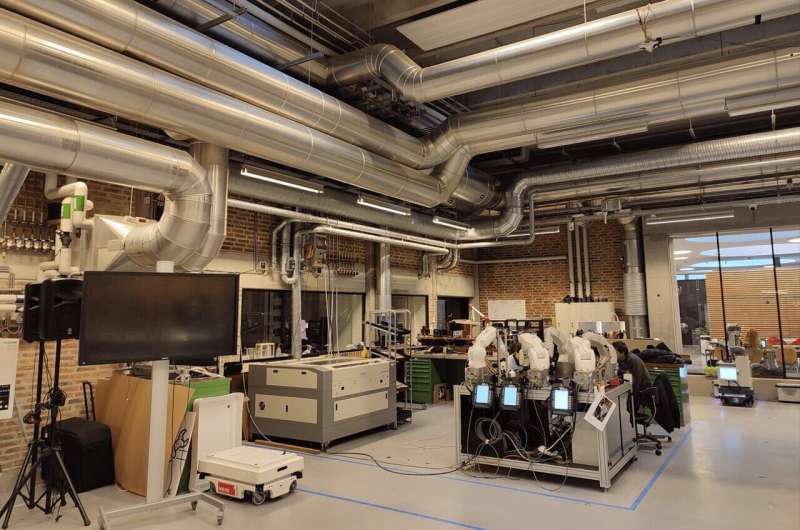
JULY 8, 2024 by University of Granada
Collected at: https://techxplore.com/news/2024-07-propagation-boost-5g-6g-networks.html
Researchers from the Smart and Wireless Applications and Technologies Group (SWAT-UGR) have conducted two scientific studies aimed at answering a common question: understanding how electromagnetic waves propagate in the medium.
The increase in network speed opens the door to new possibilities, such as robotic surgery or virtual reality services.
A team of UGR researchers has examined the propagation of electromagnetic waves with the goal of enhancing the deployment of 5G and 6G networks. Additionally, the study results contribute to the development of Industry 4.0, which seeks to automate processes in factories using wireless technologies.
The researchers, part of the SWAT-UGR group, have undertaken two scientific works addressing the common question of understanding how electromagnetic waves propagate in the medium. The first article, published in IEEE Transactions on Wireless Communications, tackles the challenge of estimating two key parameters characterizing electromagnetic waves: the angle and time of arrival of signals traveling through the medium.
To achieve this, the team employs a “somewhat exotic” sensor geometry known as toroidal arrays—geometric shapes resembling donuts. The second published work aims to comprehend the mechanisms by which electromagnetic waves propagate in an industrial environment, investigating how they are affected by such scenarios.
The common thread in these investigations is the study of millimeter waves—the invisible messengers carrying information for telecommunications services, such as mobile networks or Wi-Fi. Currently, these services typically operate in frequency bands below 6 GHz. However, due to the exponential growth of users and devices, these networks face saturation risks.
Consequently, one of the key proposals from the new 5G and 6G technologies is deploying services in higher-frequency bands than the current ones. This translates to increased network speed for users and more stable connections, opening the door to new possibilities like robotic surgery or virtual reality services.
“Before expanding our networks to new frequencies, it’s crucial to understand how waves propagate in these bands, as there are notable differences between this millimeter band and those currently employed,” explains Alejandro Ramírez Arroyo, the lead researcher from UGR. “For instance, a wave doesn’t propagate the same way across the sea as it does between buildings in a city like Granada,” adds Ramírez.
The second study, published in IEEE Transactions on Vehicular Technology, focuses on a specific environment: industrial scenarios, where waves are exposed to obstacles due to heavy machinery, for example. Thus, this work analyzes how millimeter waves propagate in factories, improving the performance of wireless networks.
Notably, this research was conducted in a unique European laboratory—the 5G Smart Production Lab at Aalborg University—where the latest technologies for Industry 4.0 development are deployed.
Future applications
What future applications can arise from the results of these University of Granada investigations? According to Ramírez, fully understanding the propagation channel and how waves travel offers an opportunity to enhance the deployment of future 5G and 6G networks. These results are notable for being obtained using geometric shapes as unique as toroidal arrays.
Furthermore, the study conducted at the 5G Smart Production Lab provides guidelines for understanding telecommunications network deployments in industrial environments. This sheds light on the operation of millimeter wave networks, contributing to the development of Industry 4.0. The goal of this industry is to automate production processes in factories using wireless means.
More information: Alejandro Ramírez-Arroyo et al, Joint Ultra-wideband Characterization of Azimuth, Elevation and Time of Arrival with Toric Arrays, IEEE Transactions on Wireless Communications (2024). DOI: 10.1109/TWC.2024.3377539
Alejandro Ramírez-Arroyo et al, FR2 5G Networks for Industrial Scenarios: Experimental Characterization and Beam Management Procedures in Operational Conditions, IEEE Transactions on Vehicular Technology (2024). DOI: 10.1109/TVT.2024.3393533

Leave a Reply